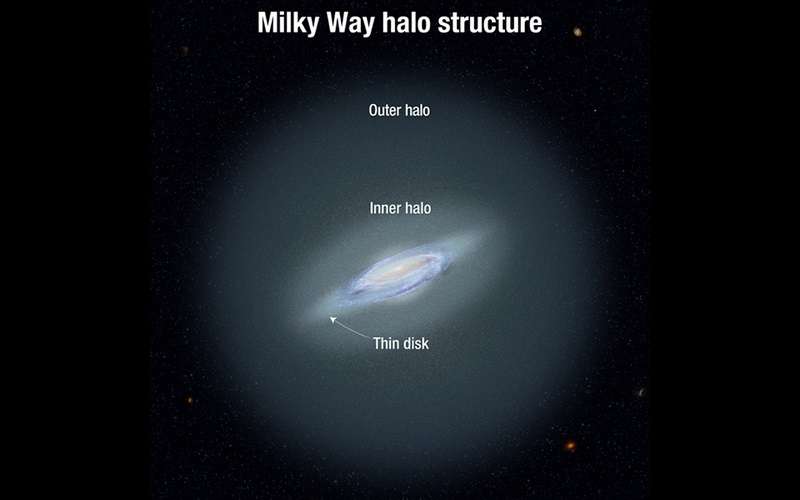Secret to Durability of Roman Concrete that Has Stood Test of Time for Over 2,000 Years Finally Discovered
The team mixed their own Roman concrete and it took only 2 weeks for a deliberately inflicted crack to close.

Astronomers have identified 208 different stars just under 1 million light years from the center of the Milky Way, placing a pretty convincing stellar road sign for the end of our home galaxy.
With the reveal photos of the James Webb Space Telescope, astronomy headlines tend to involve the universe at large, but studying our own galaxy not only helps to inform the structure of other galaxies in the universe, but also features in our own cosmic neighborhood.
Called RR Lyrae stars, the 208 most distant stars were actually found in the residual data of a ground-based telescope survey of a cluster of galaxies beyond the Milky Way.
The Milky Way consists of a "bulge"—the galactic center, around which can be found the thin spiral-arm disk where our own solar system resides, followed by the inner and outer "halo" a region that's typified by large amounts of dark matter and less information than the inner regions.
Our disk is about 100,000 light years across, but the outer halo extends in every direction for hundreds of thousands of light years. In this region the stars were found "beating" like hearts in the darkness due to their unique characteristics.
"The way their brightness varies looks like an EKG—they're like the heartbeats of the galaxy—so the brightness goes up quickly and comes down slowly, and the cycle repeats perfectly with this very characteristic shape," said Raja GuhaThakurta, professor and chair of astronomy and astrophysics at UC Santa Cruz.
"In addition, if you measure their average brightness, it is the same from star to star. This combination is fantastic for studying the structure of the galaxy."
The RR Lyrae stars are very old stars in the galaxy, and placing 208 of them in the outer reaches of the halo will make for an excellent data point for astronomers studying the formation of the Milky Way.
Astronomers measure galactic distance in kiloparsecs; each one representing 3,260 light years. Some of the farthest RR Lyrae stars identified were 320 kiloparsecs from the bulge, or around 1.04 million light years, with that decimal figure representing a fair expansion of the previous estimations on the outer reaches of the outer halo.
It's around 2.5 million light years to the nearest neighboring galaxy of Andromeda.
"This study is redefining what constitutes the outer limits of our galaxy," said GuhaThakurta. "Our galaxy and Andromeda are both so big, there's hardly any space between the two galaxies."
BLAST OFF This Interstellar News To Your Friends…
Be the first to comment